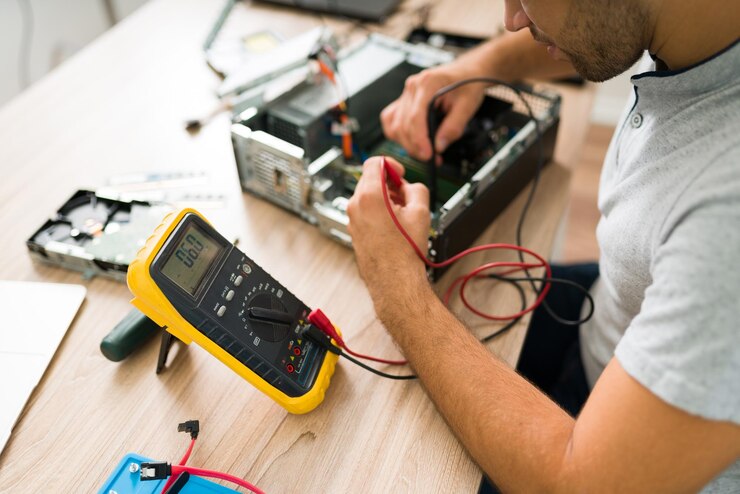

Electricity powers our modern world, but with great power comes great responsibility. High voltage testing plays a crucial role in ensuring that electrical equipment, cables, and systems operate safely, minimizing the risks of breakdowns or hazardous situations. This guide will take you through everything you need to know about what is high voltage test, from its purpose and importance to how it protects people and equipment alike.
High voltage testing is more than just an electrical test—it’s a guardian of safety. This process involves applying a controlled high voltage to electrical components or systems to identify any weaknesses in insulation, potential points of failure, or defects. The goal is to ensure that the equipment can withstand operating voltages and any unexpected electrical surges. High voltage tests are not merely technical procedures but are vital safeguards that protect people, equipment, and systems from potentially dangerous failures.
Imagine relying on a machine to operate at high capacity, only to have it fail unexpectedly due to an electrical fault. High voltage testing is designed to prevent these incidents by identifying issues before they lead to breakdowns, fires, or worse, injuries. This test checks the integrity of the electrical insulation and components, ensuring they can withstand real-world voltage stresses.
The process not only confirms the reliability of new equipment but is also essential for periodic maintenance. Over time, materials degrade, and testing helps detect wear or defects before a failure occurs, keeping both people and systems safe.
There are several types of high voltage tests, each designed to evaluate different aspects of an electrical system. These tests help assess insulation, detect defects, and ensure overall performance.
The dielectric withstand test, sometimes known as the “hipot test,” is a critical assessment that applies a high voltage to an electrical system to ensure that its insulation can handle normal operating conditions without breaking down. If the insulation fails during this test, it could indicate a risk of short circuits, equipment failure, or even dangerous electrical shocks.
This test is often used on motors, transformers, and various other electrical components. By performing this test, engineers can be confident that the equipment will operate safely under normal and even slightly elevated voltages.
Insulation is the unsung hero of electrical safety, keeping currents flowing where they’re supposed to. The insulation resistance test checks how well the insulation resists the flow of electrical current. It’s a critical measure of an electrical system’s long-term durability and safety.
If the insulation weakens, the equipment could malfunction, or worse, create a safety hazard. This test is typically performed using a megohmmeter, which measures the resistance of the insulation.
While high voltage tests often focus on insulation, the partial discharge test is more nuanced. It detects small electrical discharges that can occur within a system, even if the insulation is intact. These tiny discharges might seem insignificant at first, but over time, they can lead to major failures or fires.
By detecting these discharges early, engineers can make informed decisions about maintenance or repairs, preventing more serious issues down the line.
High voltage testing involves connecting a piece of electrical equipment to a high-voltage power source, applying a voltage that exceeds normal operating conditions. The equipment’s performance is then monitored to detect any abnormalities or weaknesses. Depending on the test, the equipment may be subjected to either alternating current (AC) or direct current (DC) voltages.
The controlled nature of the test ensures that any issues are detected in a safe environment, reducing the risk of equipment failure in the field.
High voltage tests are widely used in industries that rely on electrical equipment. Whether it’s power generation, manufacturing, telecommunications, or transportation, these tests ensure that equipment operates reliably under high-voltage conditions. Some common applications include:
These tests play a critical role in preventing costly downtimes, ensuring equipment longevity, and most importantly, protecting human life.
Safety is paramount during high voltage testing. Engineers follow strict protocols to ensure that the testing environment is secure, minimizing the risks associated with working at high voltages. Protective gear, specialized tools, and secure testing environments are just a few of the safety measures in place.
Personnel are trained to handle high-voltage systems with care, always being aware of the potential risks. It’s vital to treat each test with the respect and caution it demands, as a single mistake can lead to severe injury or equipment damage.
High voltage testing is not just a technical necessity—it is a protective shield that ensures the safe and reliable operation of electrical equipment. By detecting flaws before they become critical, it protects both people and machines. Electrical systems are the backbone of modern society, and high voltage testing ensures that backbone remains strong and secure.
Investing in high voltage testing is more than just a safety measure; it’s a commitment to long-term reliability and peace of mind.